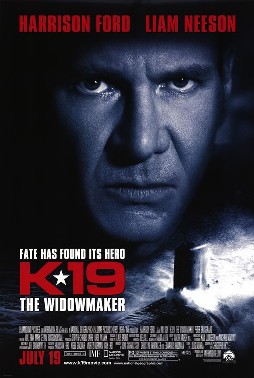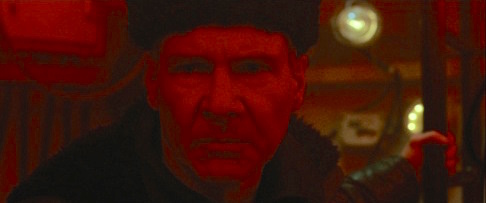Anne Marie's 'Women's Pictures series' continues with July's subject Kathryn Bigelow...
 Films about the Cold War are an unusual bunch. Whereas most war movies have a streak of jingoism necessary to the action ("fight the enemy, kill the enemy, win the war for God and country!"), the point of films about the Cold War - barring any alternate realities - is to actually avoid conflict. Men in these movies are forever preparing for war, even as they frantically try to prevent it. Instead of fighting soldiers, men fight bureaucracy, accidents, and misinformation. Done poorly, these films can feel like a trip to the DMV: too much paperwork and waiting in line. Done well, the looming cloud of Doomsday can overshadow even the most seemingly insignificant decision. There may be no genre more anti-war than the Cold War Film.
Films about the Cold War are an unusual bunch. Whereas most war movies have a streak of jingoism necessary to the action ("fight the enemy, kill the enemy, win the war for God and country!"), the point of films about the Cold War - barring any alternate realities - is to actually avoid conflict. Men in these movies are forever preparing for war, even as they frantically try to prevent it. Instead of fighting soldiers, men fight bureaucracy, accidents, and misinformation. Done poorly, these films can feel like a trip to the DMV: too much paperwork and waiting in line. Done well, the looming cloud of Doomsday can overshadow even the most seemingly insignificant decision. There may be no genre more anti-war than the Cold War Film.
K-19: The Widowmaker, Kathryn Bigelow's first war film, is a fictionalized retelling of the misfortunes onboard Russia's first K-19 nuclear submarine that nearly caused World War III. Amidst government negligence, rushed manufacturing, and political malarky, Captain Alexei Vostrikov (Harrison Ford) is assigned to captain the submarine's crew, led by the former captain, Mikhail Polenin (Liam Neeson).
Neeson & Ford's Gruff-Off after the jump...
K-19: The Widowmaker spends a long first act walking the viewer through the bureaucratic BS that Vostrikov and Polenin are fighting. The stakes during K-19's maiden voyage - scaring the US, proving Russian engineering, testing a known faulty design, hiding governmental failures - already crowd the captains before they even set foot on the ship. Once the submarine gets underway, the dangers mount: crew injuries, a possible nuclear meltdown, a US ship shadowing them, and mutiny.
Though the first act is burdened by plodding exposition, once the film enters the submarine it paradoxically becomes freer. Bigelow has considerable skill as a director of action sequences, and manages to create a dynamic, active camera within the cramped confines. Neeson and Ford have a Gruff-Off, trying to see who can be the most charmingly churlish, and the result seems to be a draw. True to its Cold War Film roots, the most terrifying sequence is not of a shootout, but rather of a repair - crew members forced to endure toxic levels of radiation wearing only chemical suits as they attempt to repair a cooling system around the nuclear reactor. The nuclear reactor tinges the water at their feet neon blue, and when they peel off their masks, they are covered in blisters. But they endure pain and death for the safety of the ship.
In contrast to the melodrama of Strange Days, K-19: The Widowmaker reveals Bigelow to be a forthright director. Just as she shoots action directly, neither obscuring nor gilding it with unnecessary beats or camera angles, so too her war movies neither condemn nor condone the decisions her characters make. In Bigelow's films, soldiers fight not out of patriotic heroism, but because it is necessary to survive. K-19 is actually the closest to judgmental she gets - the film has a slight anti-USSR bias which feels almost archaic 13 years after the Berlin Wall fell. However, Bigelow's interest in storytelling has never been in government or the "big picture." Bigelow's focus is the little man in the fight, the soldier on foot (or underwater) who has to choose to follow the orders he is given. It's a human approach to war stories, and it is an approach that would win her an Academy Award less than a decade later.

NEXT WEEK'S FINALE 7/30
The Hurt Locker (2008) - The film that put Bigelow's name down in history as the first female director to win the Academy Award is a thriller about a bomb squad in the Iraq War. (Watch on Amazon Prime)
